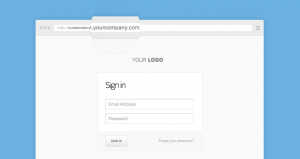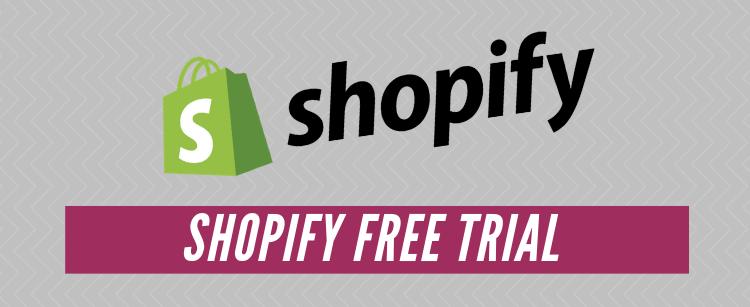Shopify is a versatile e-commerce software that helps merchants build websites and track inventory. For those who are interested in testing the software but aren’t sure if they are willing to commit to a pricing plan, Shopify offers a free trial. Shopify is currently offering a 90-day free trial to support aspiring entrepreneurs looking to take this time to investigate what Shopify has to offer.
But what happens after your free trial of Shopify ends?
Those who are interested in continuing to use the software must choose a pricing plan and will receive full access to the features associated with that plan. Those who do not wish to continue must either deactivate their site or let it expire on its own.
Here is a look at a few things you can do once your Shopify free trial ends.
Choose a Pricing Plan
If you continue with Shopify past the initial trial period, you must choose a pricing plan. There are three options; Basic, Standard, and Advanced.
The Basic Shopify plan is $29/month and includes all the major features. This is perfect for those just starting an online business and would prefer to save money over having all the bells and whistles.

The Standard Shopify plan is $79/month and includes more features like advanced shipping options and point of sale capabilities. This is a good plan for an established business looking for a way to streamline its procedures and manage inventory.
The Advanced Shopify Plan is $299/month and features all the possibilities Shopify has to offer and allows up to eight store locations. This is a great plan for businesses looking to scale quickly and need a solid infrastructure and professional support to do so.
Each plan also features a different fee rate for credit card processing. For instance, the Basic plan charges a 2.9% + 30 cent fee on online credit card transactions, while the Advanced Plan charges 2.4% + 30 cents.
More specific info about the different Shopify plans is available on their website. The size of your businesses and the goals you’re looking to achieve will determine which plan you choose. If you’re just starting, it’s wise to start with the basic plan and adjust as you scale. Plans can be adjusted at any time, so there is no reason to overcommit if you’re unsure of where you’re taking your business.
Select a Custom Domain
The next step once your Shopify free trial ends is to select a custom domain. When you register with the site, you’ll receive a Shopify anchored domain. For example, instead of www.mystore.com, you’ll have a domain like www.mystore.myshopify.com.
You are free to continue to use this domain if you so choose. But if you are serious about starting an e-comm business, it’s better to choose a domain that’s easy for your audience to remember.

Shopify has its own domain registration system, so there’s no need to register with another web hosting platform. The price of a domain varies depending on the popularity of the search term – most will only cost around $15 – $20 unless you’re attempting to lock in a domain with intense competition.
However, keep in mind this is a separate yearly charge than your monthly subscription. Every year you’ll have to renew the domain if you want to keep it (although Shopify will usually notify you and do it automatically unless you’ve indicated otherwise).
It’s a small, but necessary expense if you’re serious about growing an online store. You may get away with using the Shopify domain for a while, but inevitably you will lose business if you don’t purchase a domain that is easy to identify.
Launch Your Store
Once the free trial ends that you can officially launch your store. Although Shopify allows you to view and edit a store during the free trial, no one will be able to purchase a product.
Once the free trial ends and you’ve decided on a pricing plan, you are free to start making sales. This opens up a whole host of new features and opportunities to use the Shopify platform. If you haven’t already, you can start importing products and configure shipping and payment options.

The obvious benefit of launching your store is that you can now start making money. Although you are free to play with the payment and point of sale features during the free trial, you won’t be able to generate any real insights until sales can be made.
The other benefit of launching your store is that you can gather data and use it to make decisions in your business. The backend of the Shopify software gives you a whole host of options for generating analytics on consumer behavior concerning your store.
You’ll be able to view the dashboard and see where the data is available. However without any real customers or sales data, the analytic features are useless.
Market Your Brand
Once you’ve launched your store, it’s to market your new brand. This could mean posting it on social media or running paid advertisements on Google or Facebook.
Shopify has an integration feature that allows users to easily import what is called a Facebook pixel into their store. The pixel will collect important data from users who visit your site and purchase products, that can be understood by the Facebook advertising algorithm and used to generate retargeted ads.

Until you’ve progressed past the free trial period, you shouldn’t start advertising. First of all, customers won’t be able to make purchases. Unless you’re advertising launch and you make it clear that the site isn’t live, it doesn’t make much sense to run ads for a dormant store (and even then, it’s probably better to wait until fully launching to start advertising).
Plus, without any sales data to run ads, they won’t be targeted and the money you put into them will most likely go to waste.
So, if you’ve played around with Shopify during the free trial and you’re still on the fence, you may consider investing the money to play with some of the core features. You can always cancel later on, but it will give you a better idea of how the software works. Then you can make a more informed decision about whether the software is right for you.

